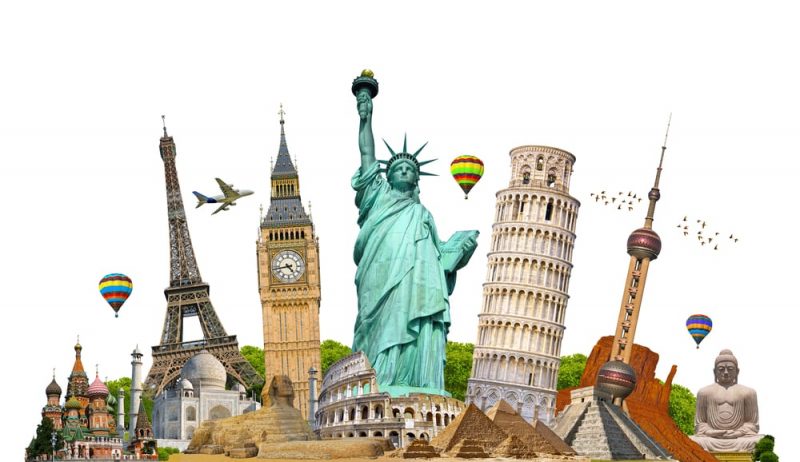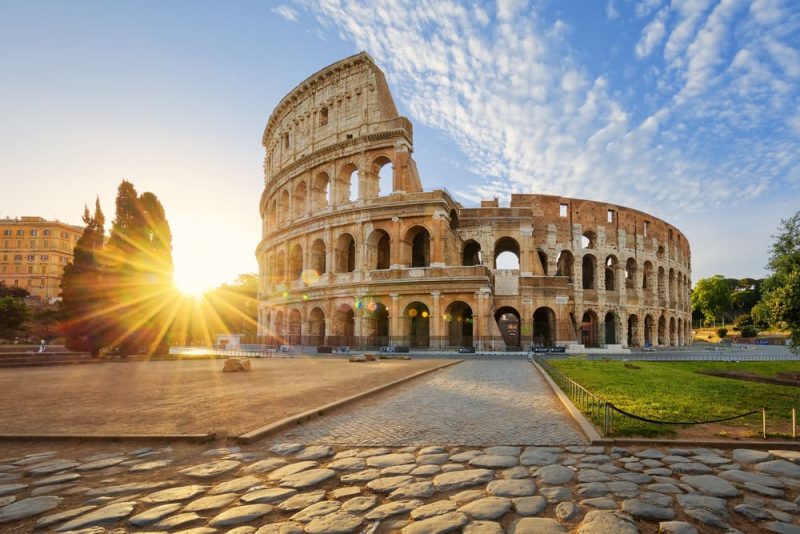The concept of cultural heritage It is not static and invariable but it changes for each society.
Cultural heritage includes all cultural expressions of a society, both past and current, which are transmitted from generation to generation. For instance: legends, folk music, indigenous pottery.
The Unesco is the United Nations Educational, Scientific and Cultural Organization. This institution seeks to identify cultural property that are relevant to each people and thus preserve them.
When Unesco Choose an object or activity as Cultural Heritage of Humanity, is because it meets any of the following criteria:
- Represent a masterpiece of human creative genius.
- Witness an important exchange of human values over a period of time or within a cultural area of the world, in the development of architecture, technology, monumental arts, urban planning or landscape design.
- Provide a unique or at least exceptional testimony of a cultural tradition or an existing or already disappeared civilization.
- Provide an eminent example of a type of building, architectural, technological or landscape ensemble that illustrates a significant stage in human history.
- Be an eminent example of a tradition of human settlement, use of the sea or land, that is representative of a culture (or cultures), or of human interaction with the environment, especially when it becomes vulnerable to the impact of changes irreversible.
- Being directly or tangibly associated with events or living traditions, with ideas or beliefs, with artistic and literary works of outstanding universal significance. (The committee considers that this criterion should preferably be accompanied by other criteria).
In addition to cultural heritage, Unesco identifies and preserves the natural heritage, according to other criteria.
However, what we call cultural heritage exceeds those specific examples selected as World Heritage Sites.
Unesco determines that cultural heritage can be material (books, paintings, monuments, etc.) or immaterial (songs, uses and customs, rituals, etc.).
Elements of cultural heritage

- Monuments. The works that societies build as a symbol of an event or situation, to remain in time (commemorate the founding of a city or battle, express faith, etc.)
- Objects that were of everyday use. Part of the cultural heritage are the objects that our ancestors used hundreds or even thousands of years ago.
- Oral traditions. Folk tales and songs were passed down, before the invention of the printing press, from generation to generation and were preserved with some variations over time.
- Performing, visual, musical, literary, audiovisual arts. All the arts are part of the cultural heritage. Some works belong to the tangible cultural heritage and others to the intangible cultural heritage.
- Architecture. Many buildings are an expression of a society and an art form, which is why they are preserved in different cities around the world.
- Rituals. Each society developed its own rituals related to faith or to different vital changes in a person’s life (birth, marriage, death, etc.)
- Social uses. Social uses are part of the intangible heritage, since they make up the identity of a people.
Examples of cultural heritage

- Legends. The legends of each area are part of their oral tradition.
- Mount Rushmore. Monument to four presidents of the United States carved on the rock.
- Eiffel Tower. Monument of Paris. Built in 1889 by Gustave Eiffel.
- Himejji Castle. Building declared cultural heritage of humanity. Japan.
- Mate. In Latin American countries such as Argentina and Uruguay, mate is part of their social uses.
- Quito’s Historic center. Architectural complex declared cultural heritage of humanity. Ecuador.
- The Gaucho Martín Fierro. Book written by José Hernández in 1872. Argentine cultural heritage.
- Aachen Cathedral. Building declared cultural heritage of humanity. Germany.
- Sistine Chapel Vault. Painting made by Michelangelo between 1508 and 1512. Currently it is part of the world cultural heritage.
- Lullabies. They are part of the oral tradition.
- Pyramids of Giza. Funerary monuments declared cultural heritage of humanity. Egypt.
- Opera. Opera is part of the world cultural heritage as it is a performing art form that has spread throughout the world.
- Historic center of Oaxaca de Juárez. Architectural complex declared cultural heritage of humanity for its beauty and for being an example of Spanish colonial urbanism.
- Well of Santa Rosa de Lima. Monument of Lima.
- St. Basil’s Cathedral. Building declared cultural heritage of humanity. Russia.
- Folk music. Folk music represents not only previous generations but also new musicians who renew it with their compositions and performances.
- Arch of Triumph. Monument of Paris.
- Samaipata Fort. Archaeological site, declared a cultural heritage of humanity for being the greatest work of rock architecture in the world. Bolivia.
- Painting of the old port. Monument of Lima that represents the old port of Callao.
- Pantheon. Monument of Paris.
- Copan. Archaeological site of the ancient Mayan civilization, in present-day Honduras, declared a cultural heritage of humanity.
- Indigenous pottery. Not only is it preserved in museums, but today indigenous peoples and their descendants make pottery that comes from techniques taught by their ancestors.
- Cinema. The cinema of each nation is part of its cultural heritage, building its own identity.
- Franciscan missions of Sierra Gorda de Querétaro. Five buildings built between 1750 and 1760, declared a cultural heritage of humanity for being a sample of architectural and stylistic unity of the popular Baroque of New Spain. Mexico.
- Llullaillaco miniatures. Ritual objects preserved in the Alta Montaña Archeology Museum, Salta, Argentina.
- Virgin of Cerro San Cristóbal. Monument in Santiago de Chile.
- Obelisk. Monument in the city of Buenos Aires that commemorates the founding of the city. Built in 1936, the fourth centenary of the foundation.
- Monument to Chacabuco. Monument in Santiago de Chile that commemorates the battle of 1817.
- Historic city of Ouro Preto. Founded in 1711, the city was the first place in Brazil to be declared a cultural heritage of humanity.
- Cuzco city. It was the capital of the Inca Empire. It is located on the Andes mountain range, in southeastern Peru, and was declared a cultural heritage of humanity.
